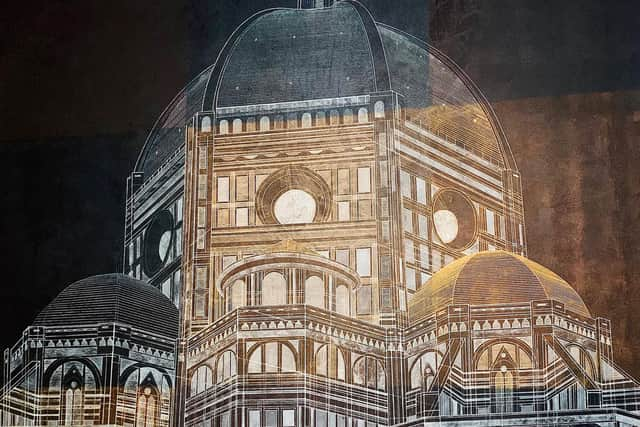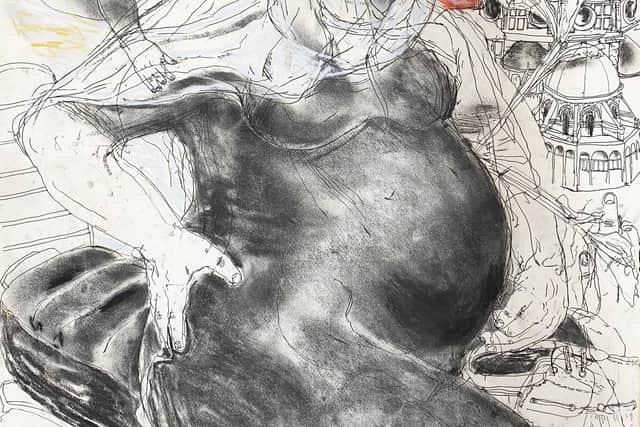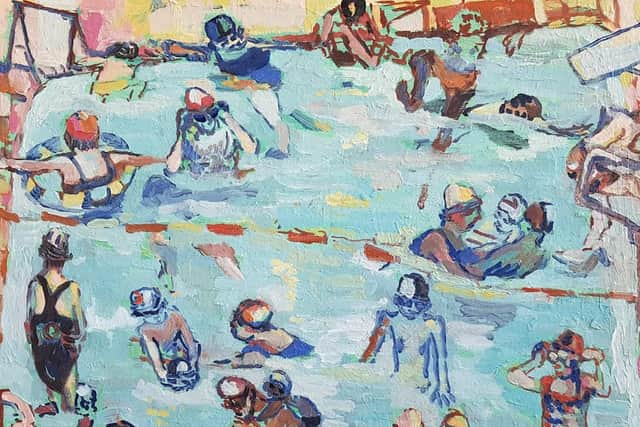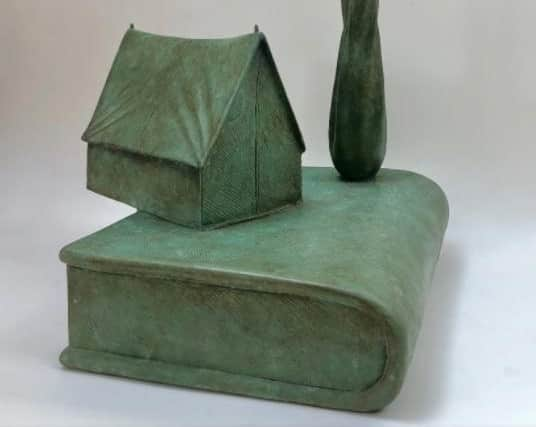Art reviews: Andiamo | James Castle | Frank Walter


Andiamo: Forty Years of the John Kinross Scholarships, Royal Scottish Academy, Edinburgh ****
James Castle: First Light, Royal Scottish Academy, Edinburgh ****
Advertisement
Hide AdFrank Walter: Music of the Spheres, Ingleby Gallery, Edinburgh ***


Before the state took over, higher education in Scotland depended on scholarships, bequests large and small that supported the young in their education. The Edinburgh University Calendar in the 1930s, for instance, was a fat document and at least half of it was taken up with details of such targeted gifts and bequests. Since that era, too, students at Edinburgh College of Art have been the beneficiaries of the munificent Andrew Grant Bequest. State support pushed such generosity out of fashion, but one notable individual who went against this trend was John Blythe Kinross CBE, HRSA. In 1981 he set up a scholarship to be administered by the RSA and in the 40 years since his benefaction it has distributed £743,000 to allow literally hundreds of students to spend time in Florence. The exhibition at the RSA, Andiamo: Forty Years of the John Kinross Scholarships is a celebration of all this.
John Kinross set up the scholarship in memory of his father, John Kinross RSA, architect of amongst other places Manderston, near Duns. When he said there was no budget for this huge project, his patron said it didn’t matter. The 1914-18 war disrupted Kinross’s practice, however, and in consequence his son John’s education was truncated. He did however subsequently do very well in finance, and so was able to fund this scholarship as well as a charitable trust in the name of his mother.
The John Kinross Scholarship is not only called after his father, however, its terms are also shaped by his father’s experience living and learning in Italy between 1880 and 1881. That is why the scholarship’s focus is on Florence and why the exhibition has an Italian title. Various formats were explored but the eventual decision was that recipients of the scholarship, in each year usually four of them, would be funded to spend up to three months in the city. Modern fashions might suggest that such an echo of the Grand Tour is outmoded in the 21st century, but the exhibition and the testimonies of some of the recipients published in the catalogue amply demonstrate that this is not true. Duncan Robertson, for example, went to Florence in 1990 and notes that 30 years later he “still refers to sketchbook that he made in Italy.” Many others make reference, if less specifically, to the enduring influence of their time there.
The exhibition itself is built around 20 artists selected by Mary Bourne RSA, who herself enjoyed the scholarship in 1985. This group is supplemented, however, by works selected from a collection the RSA has formed as a record of the scholarship. These include postcards, notebooks, sketches and paintings. More are illustrated in the catalogue, too. A massed drawing of Florentine sculptures and characters by Christopher Wells also includes admonitions such as Do not Drink and Draw and the touching declaration I love the RSA. It’s fascinating to browse through the wonderfully diverse and often clearly immediate responses to the experience of Florence and Italy more generally.


The Academy’s collection also includes more substantial works too, such as a very fine drawing by Kenny Hunter of a figure on horseback done in 1987. Elsewhere you can also see the artists then and now. Niall Gall, for instance, now makes austere abstractions, but in Florence he made heavily impacted paintings of church interiors. Mary Maclean has enjoyed a similar journey. A rather lovely watercolour of Florence has been succeeded by large and beautiful photographs that appear abstract, but are of actual things. Thus Infinite Space Uncertain is, as the label tells us in brackets, actually a photograph of a blackboard. Wendy McMurdo is represented by four of her striking photographs of children in strange masks, but in Florence in 1985 she produced lovely drawings of freely associated classical and Renaissance figures.
Advertisement
Hide AdPenelope Mathieson makes surreal ceramics of vegetables with bizarre animations added. She says that although she spent time looking at ceramics in Italy, it was the spectacle of the Arno and its ecology which had the most profound effect on her. Among other striking works here are the drawings and models for the spectacular London Velodrome designed by architect Michael Taylor with Hopkins Architects. There is a large, rather beautiful female nude by Chantal Joffe, now an RA. She complains that her mother went with on her scholarship, not at all the thing to do, but it was a turning point for her nonetheless. Other notable works include Swimming in Ophidium, a rather disturbing wriggling sculpture by William Darrell, and Kevin Dagg’s Losing Paradise, a life-size unhappy looking Adam carved in wood.
Mary Bourne herself is represented by a beautifully austere relief of 20 rectangular elements of black slate and and white marble. Fittingly, it suggests an echo of the patterned marble of the great churches of Florence. Perhaps the signature piece of the whole show, however, is Steven McIver’s huge perspective drawing of the Florence Duomo, Santa Maria Dei Fiori, done in two versions, one simply in oil, the other in oil and gold leaf. A perspective drawing of the Duomo from his time in Florence in 2002 seems to pin the whole thing to the experience of his scholarship and so testify to its continuing value and relevance for all these artists.
Advertisement
Hide AdThis show is in the three front galleries the RSA. The fourth is devoted to the work of Academician James Castle, a sculptor whose idiom is surrealist and who works mainly in wood and bronze. In the true Surrealist manner it is, he says, in part inspired by dreams, or at least by that liminal place between sleeping and awake and so organic shapes or indeed creatures behave in unexpected ways. What appears to be the root of a tree sprouts leaves, or a tall stem is actually hanging and has an upside down flower at the top. A coil of rope turns into a cat or perhaps its vice versa. Perhaps most intriguing is the bronze called First Light which gives the show its title. A cottage is perched uneasily on a book beside a tall cypress. It is a kind landscape, but vividly suggests that liminal waking moment.


The Ingleby Gallery is showing Music of the Spheres, a set of small circular paintings by the late Frank Walter. He was an Antiguan painter and autodidact who had a strange visionary view of the world and his place in it. There are echoes in his work of the Cornish naive painter Alfred Wallis, much admired by the St Ives artists, although Hans-Ulrich Obrist apparently described him with a little bit of hyperbole as the Leonardo da Vinci of Antigua. His large paintings are remarkable, but the pictures in this whow, all the same size and format and less than a foot in diameter, rarely rise above the ordinary. A painting of a view through a widow, a nude woman with plants, and perhaps one or two seascapes do touch on something more significant perhaps, but although the Ingleby Gallery has championed Walter and rightly so, this show could really only preach to the converted.
Andiamo and James Castle until 17 October; Frank Walter until 25 September
A message from the Editor:
Thank you for reading this article. We're more reliant on your support than ever as the shift in consumer habits brought about by coronavirus impacts our advertisers.
If you haven't already, please consider supporting our trusted, fact-checked journalism by taking out a digital subscription at https://www.scotsman.com/subscriptions